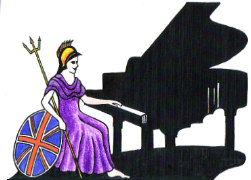Teachers, Accompanists and Piano Entertainers in the UK

UK Piano Page

Regency Workshops
Hunters Bar
Sheffield, South Yorkshire S1 2PN
England
Suppliers of quality pianos, new and secondhand
20 Moorfield Drive
Baildon
Shipley, West Yorkshire BD17 6LQ
England
Cunningham Piano always has a varied selection of
Grove House
Wade House Road. Shelf
Halifax, West Yorkshire HX3 7PF
England
GSG Pianos is one of the North of England’s
Galways Mill
Leeds, West Yorkshire
England
Specialist piano dealer and wholesaler. Hundreds
Unit 2, Dogford Rd
Royton
Royton, Greater Manchester OL26UA
England
We are UK's largest stockist of fully
Music Festival for performers and guests Our 10th
18-06-2022 12:30PM
The Morecambe Bay Piano Group was set up to extend
11-12-2021 01:00PM
The Morecambe Bay Piano Group was set up to extend
08-01-2022 01:00PM
The Morecambe Bay Piano Group was set up to extend
12-02-2022 01:00PM
Temperament
Temperament is both the process and result of making slight changes to the pitches of a pure musical scale, so that the octave may be conveniently divided into a usable number of notes and intervals. In the history of Western music's 12-note octave tradition, there have been several, fundamentally different forms of temperament applied to the developing keyboard. Music suffers when performed in a tuning that is different than that which the composer used in its creation.
Well Temperament Keyboards
Well Temperament Keyboards may be tuned so that all keys are musically usable, but contain varying degrees of the "wolf". This is the tuning used in this recording. Between the Early Baroque and Romantic eras, the popular tuning was something between Meantone and Equal Temperament. This era was a brief, transitional stage in temperament history, but considering the music composed during this period, its importance cannot be overlooked. This style of tuning is called "Well Temperament" following the use of the term by J.S. Bach. The term refers to a genre, rather than a specific temperament, as there were many Well Temperaments in use between 1700 and 1825.